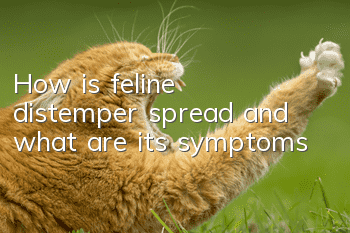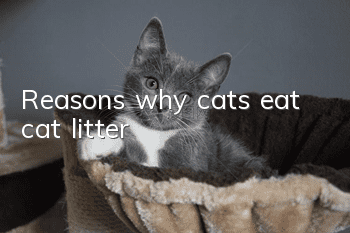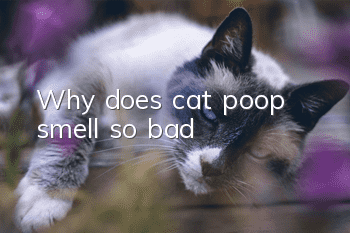How is feline distemper spread and what are its symptoms?

Cats are cute and easy to raise. They don’t need to be taken out for walks. They are the choice of many pet owners. When choosing to feed kittens, kittens have weak resistance, so pay special attention to the infectious disease feline distemper.
Feline distemper is an infectious disease caused by feline panleukopenia virus (FPV), also known as feline infectious enteritis. It is highly contagious and has an acute onset. Kittens under 1 year old are more likely to get it than adult cats, and are more serious. The mortality rate is extremely high.
Feline distemper is characterized by a sharp decrease in white blood cells (but not all cases of leukopenia are feline distemper, other diseases can also cause leukopenia, such as feline leukemia, feline hepatitis, etc.). Cats with incomplete or unvaccinated vaccinations are prone to feline distemper, especially kittens aged 3-5 months. If a female cat is infected during pregnancy, it can cause stillbirth, miscarriage and neurological symptoms in newborn kittens.
How is cat plague spread?
The eye, nose, and excreta of sick cats contain a large amount of viruses. Healthy cats may be infected by contact with virus-containing urine and feces, as well as through oral contact with eating utensils, clothing, and the environment used by sick cats. They can also be infected through contact with infected cats. Infection through contact with sick cats. Blood-sucking insects such as lice and fleas can also help spread the disease. Pregnant female cats can pass the disease to their fetuses. Recovered cats can still shed the virus through their feces and secretions for a long time, infecting other cats.
Therefore, it is important not to require isolation and treatment for cat plague.
(Cats suffering from feline distemper are very weak)
Cause
Ⅰ. Virus characteristics
A. Feline panleukopenia virus (FPV) is a parvovirus.
B. FPV is relatively stable and is resistant to most disinfectants except bleach, formaldehyde and glutaraldehyde.
II. Epidemiology
A. FPV can infect cats and other animals, such as raccoons, ferrets, raccoon cats, and mink.
B. FPV is transmitted directly through infected animals and their secretions, especially feces.
C. Because FPV can survive in the environment for a long time, infectious agents (contaminants) are important.
D. The incidence of panleukopenia is highest in kittens aged 3 to 5 months.
(The most typical symptom of feline distemper is frequent vomiting, which is not related to eating, and the vomitus is yellow and bile-like)
Clinical symptoms
When cats are infected by feline distemper virus, two situations generally occur. For cats with strong body resistance, although they have been infected by the virus, they do not become ill, which means that they will not show clinical symptoms of feline distemper, but only Healthy poisonous cats. Cats with weak body resistance are unlucky. They will have symptoms of feline distemper in varying degrees. In mild cases, their appetite may only become worse, while cats with severe illness will show more typical symptoms of feline distemper.
The main symptoms are: fever, which can reach 40~41°C; lack of energy and anorexia, and even inability to drink water in severe cases; the most typical symptom is frequent vomiting, which has nothing to do with eating, and the vomitus is yellow and bile-like, even at this time Cats have not eaten or drank for several days, but they can still vomit or have diarrhea; the degree of diarrhea is not exactly the same in every cat. In severe cases, watery and bloody stools may appear, and they may have diarrhea many times a day. Cats with mild symptoms may only have unformed and pulpy stools; as the condition worsens, they may have diarrhea and bloody stools, and even excrete intestinal mucosa (mucus or flake or strip-like objects in loose stools) due to constant vomiting and Diarrhea. Sick cats will quickly develop symptoms of dehydration (poor skin elasticity, sunken eyeballs). Other complications include oral ulcers, bloody diarrhea, jaundice, and generalized intravascular coagulation syndrome. If not treated in time, they will soon die due to collapse; some kittens may develop neurological symptoms. At this time, the cats will be unable to walk normally, may stagger when walking, and often fall down unconsciously. And if some kittens are infected with feline distemper virus before they are born, they may have retinal dysplasia, overlapping or wrinkled lesions after birth. These cats usually become blind or have very weak vision.
If the disease lasts for more than 5-7 days and no fatal complications occur, it can often be recovered; the number of white blood cells will return to normal within 24-48 hours beyond the disease.
In the most acute form, cats may die suddenly without showing clinical symptoms. Death occurs within 24 hours in the acute form. The fever and body temperature of sick cats can reach over 40°C, and then may drop to normal body temperature, and then rise again, or they may have a high fever that does not subside. When the condition is critical, the body temperature of sick cats can be significantly lower than normal body temperature. Some cats have mild symptoms, and may even be asymptomatic when infected with the virus, but they may develop or worsen under circumstances such as sudden changes in the environment, reduced immunity, or surgery. Infection in pregnant female cats can cause miscarriage, stillbirth, and fetal malformations.
Of course, you don’t want to abandon your cat when you hear it has cat plague. Although cat plague is scary, some cases can be treated. If you choose it, don’t abandon it.
- How to train a cat to go to the toilet on its own?
- How to train an Occi cat not to bite? Change your living habits!
- Why does the cat’s butt stink?
- What should pregnant cats eat to supplement their nutrition?
- How to check if a cat has ringworm?
- There are good ways to choose and buy good and cheap cat food
- How often should you use catnip? Is catnip addictive for cats?
- What is the smell that cats hate the most?
- If a cat’s body becomes soft after death, does that mean it’s not dead?
- What should we do if a cat harasses us in the middle of the night? A must-read for cat owners!



